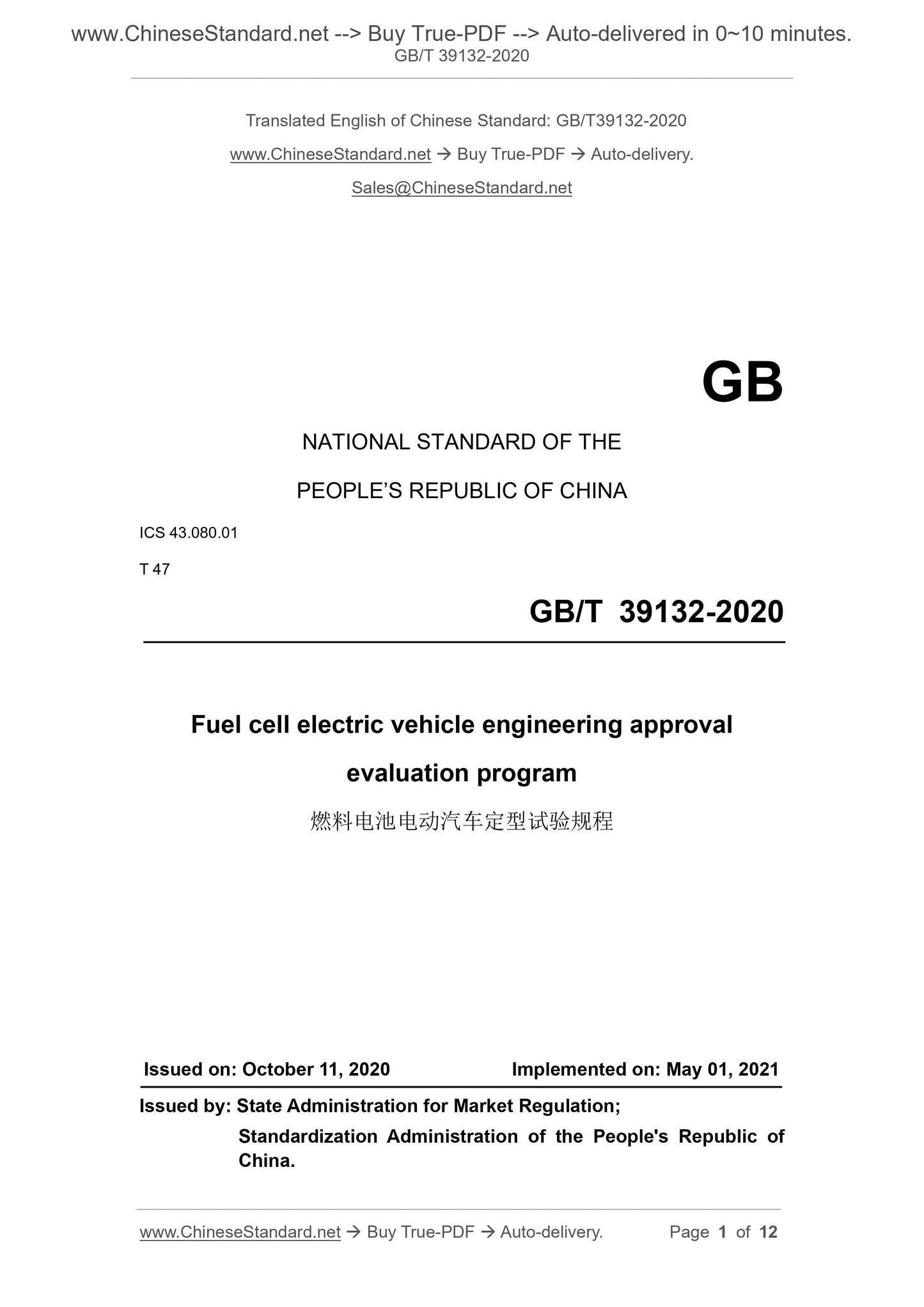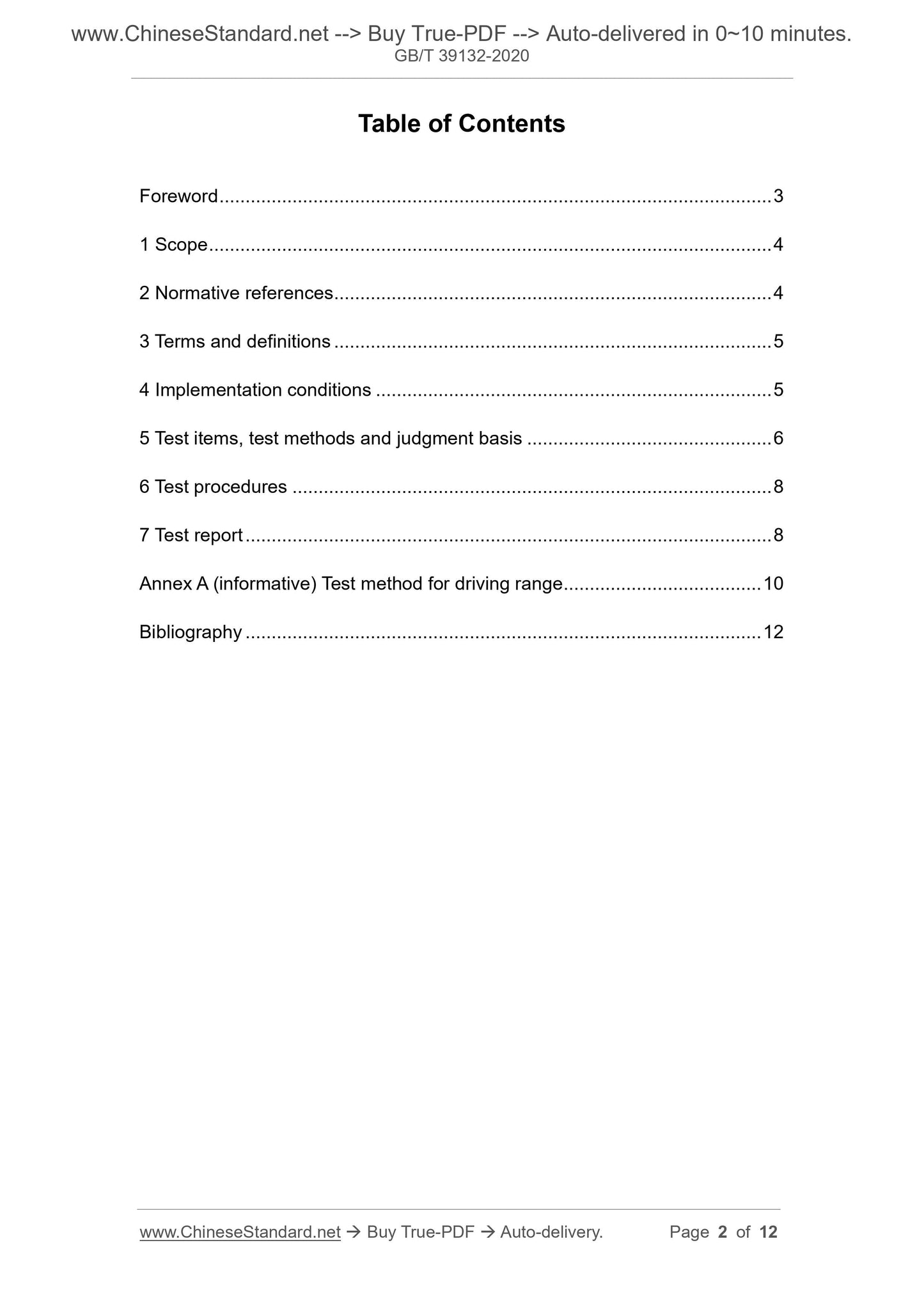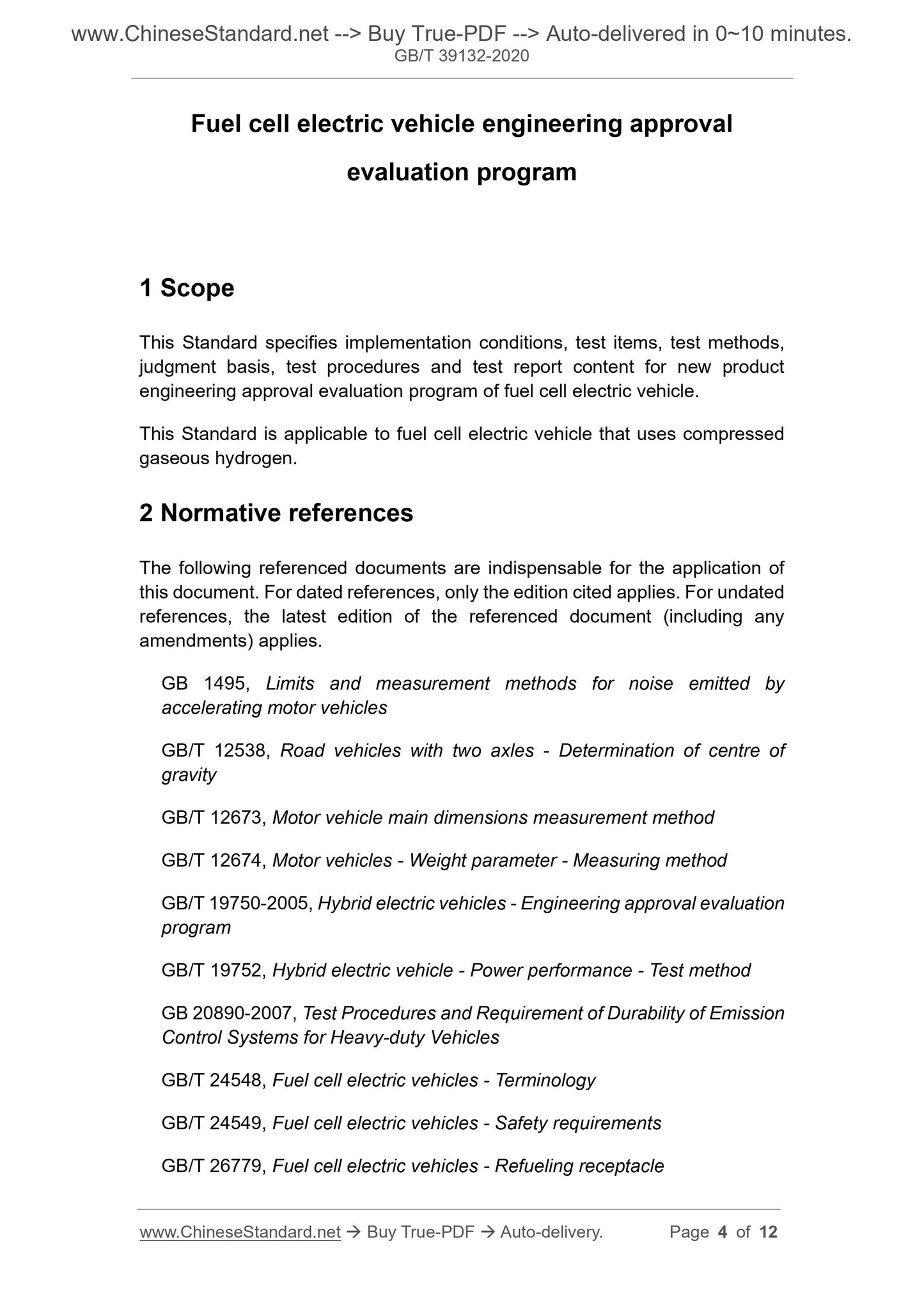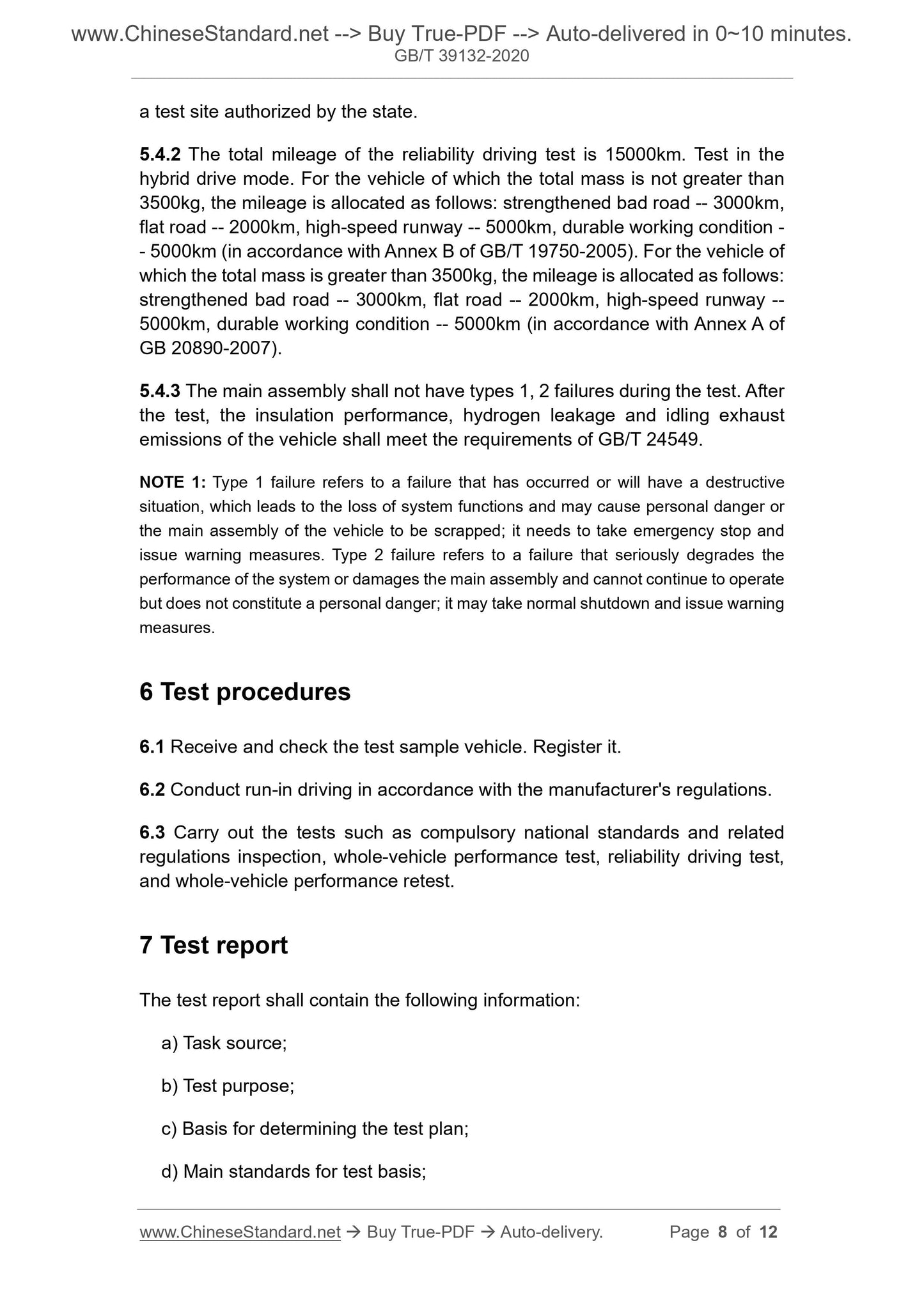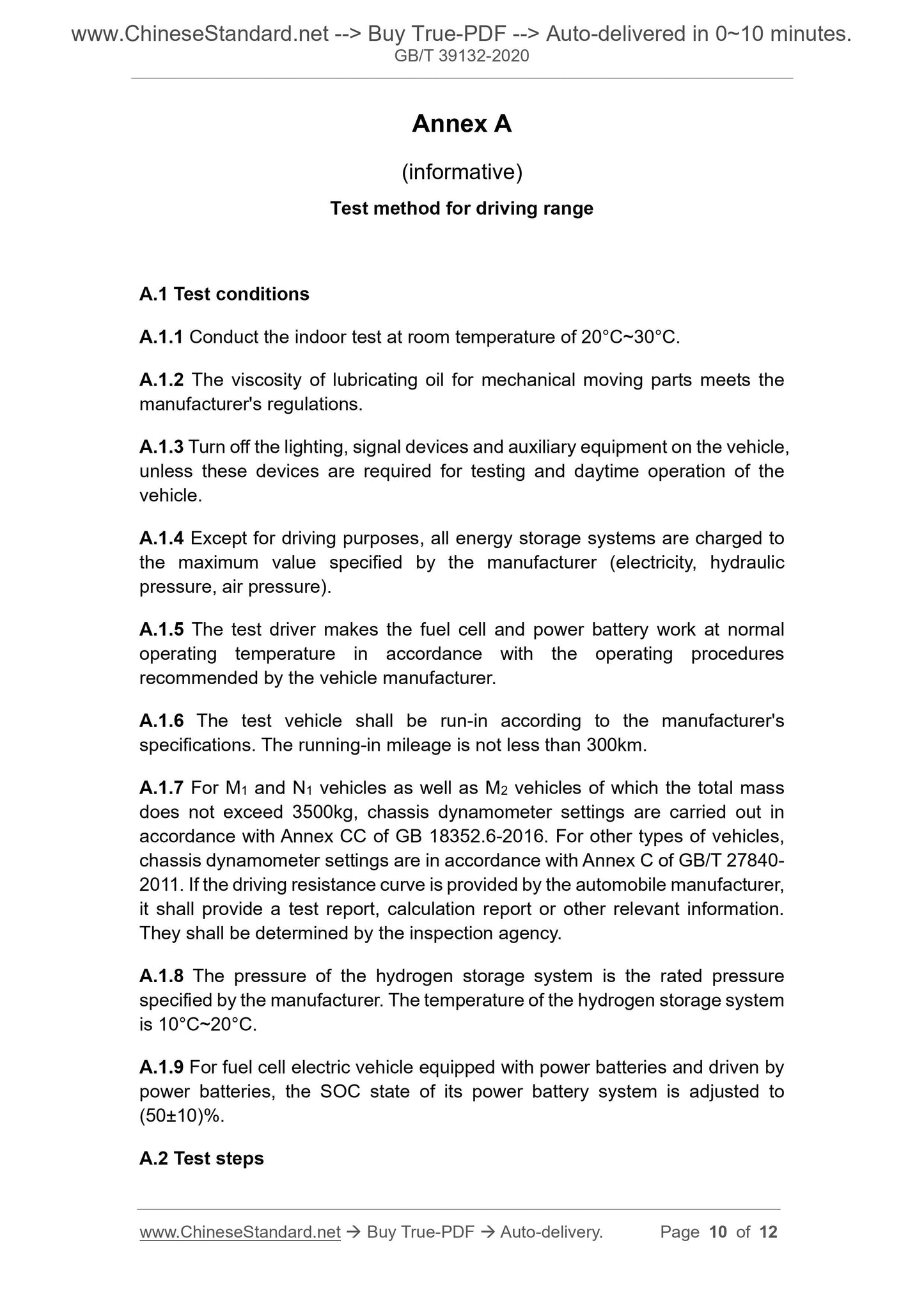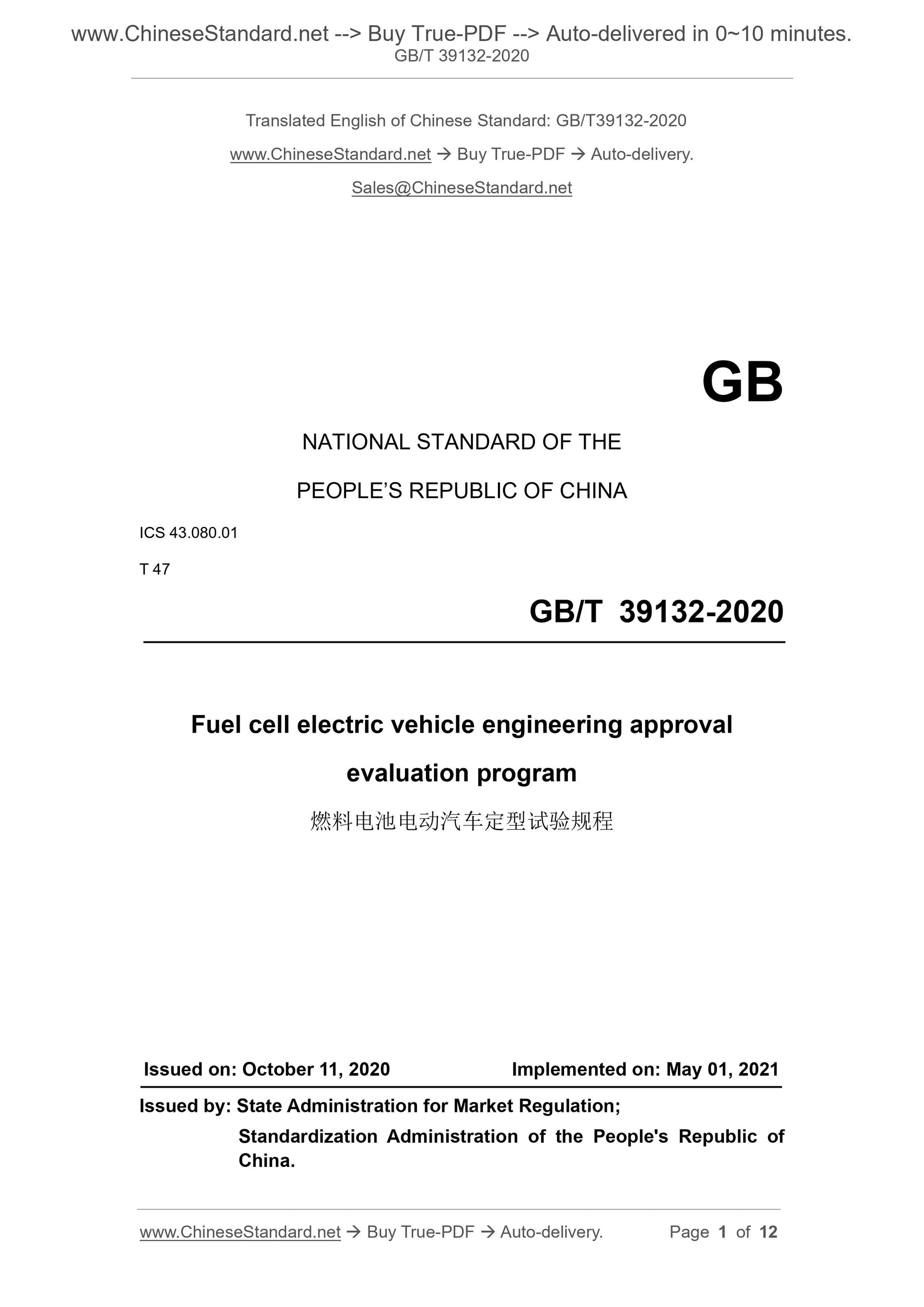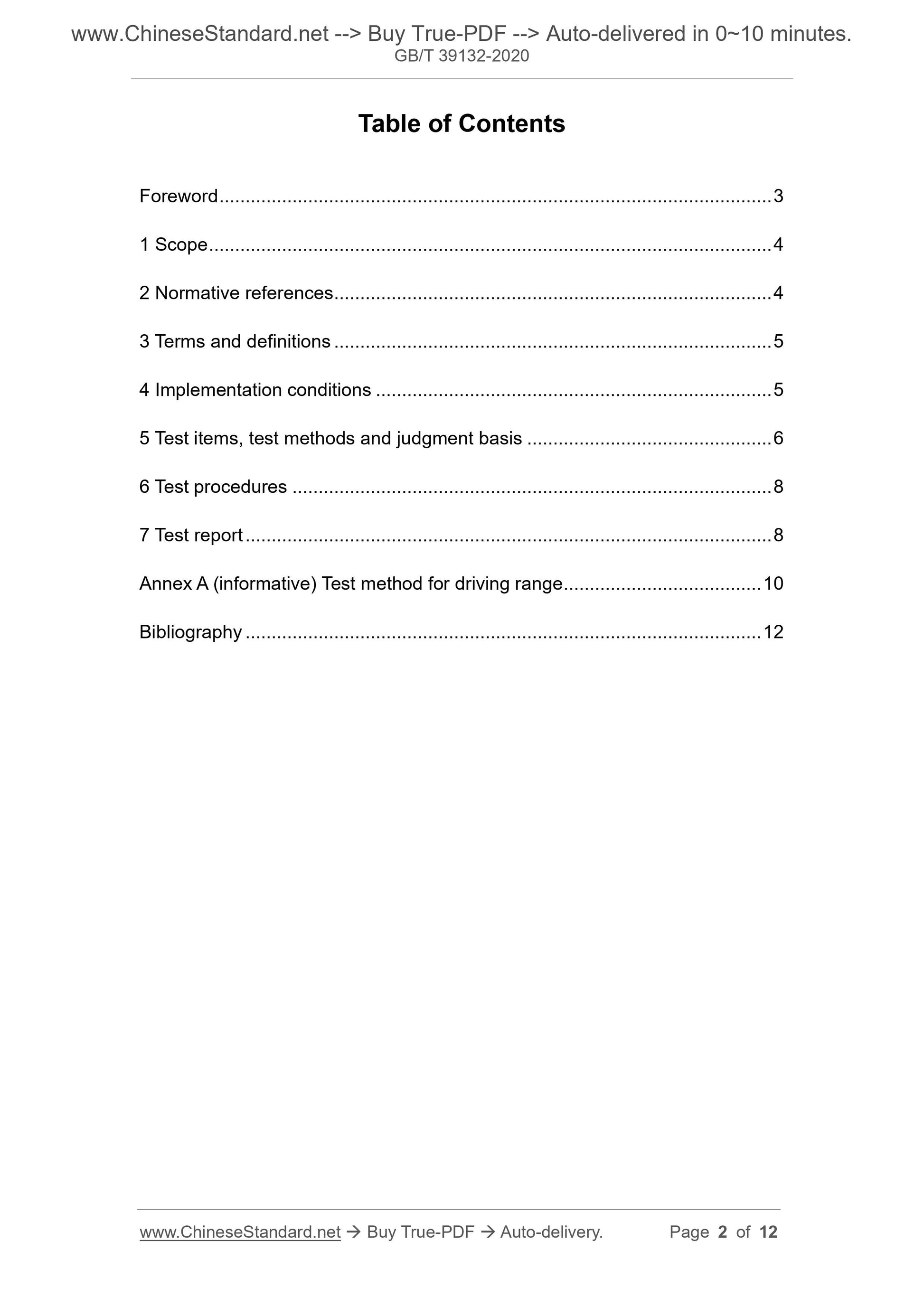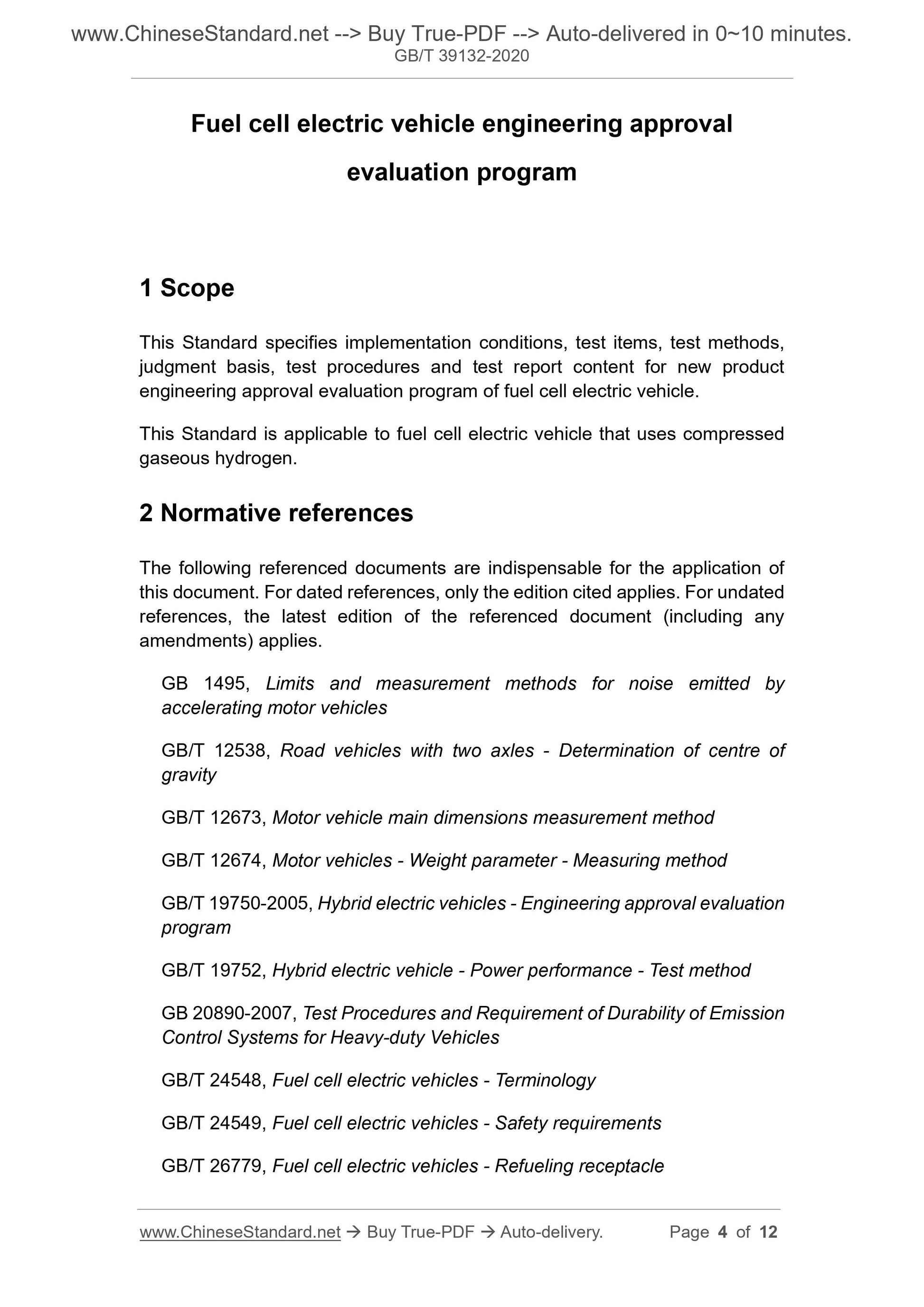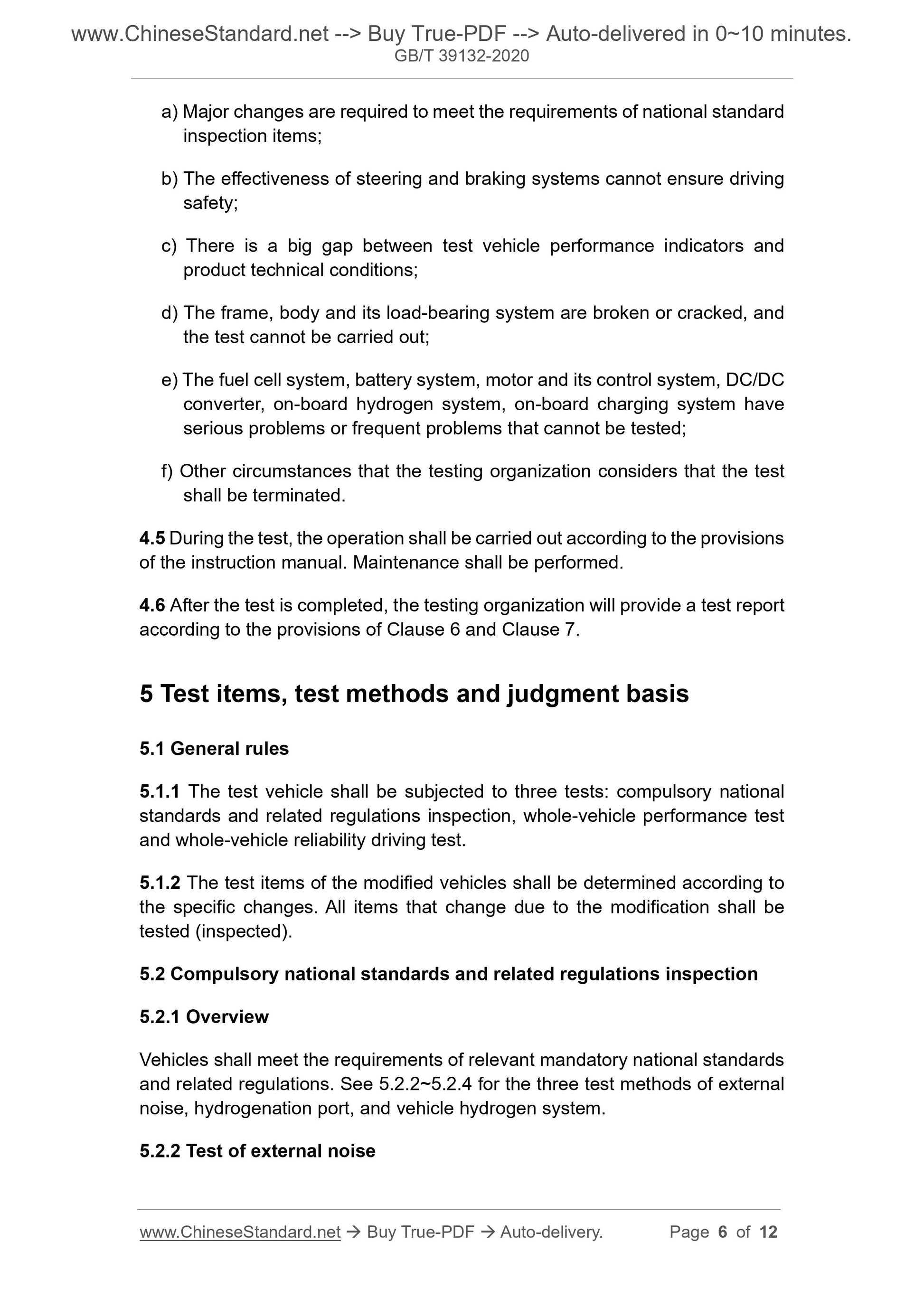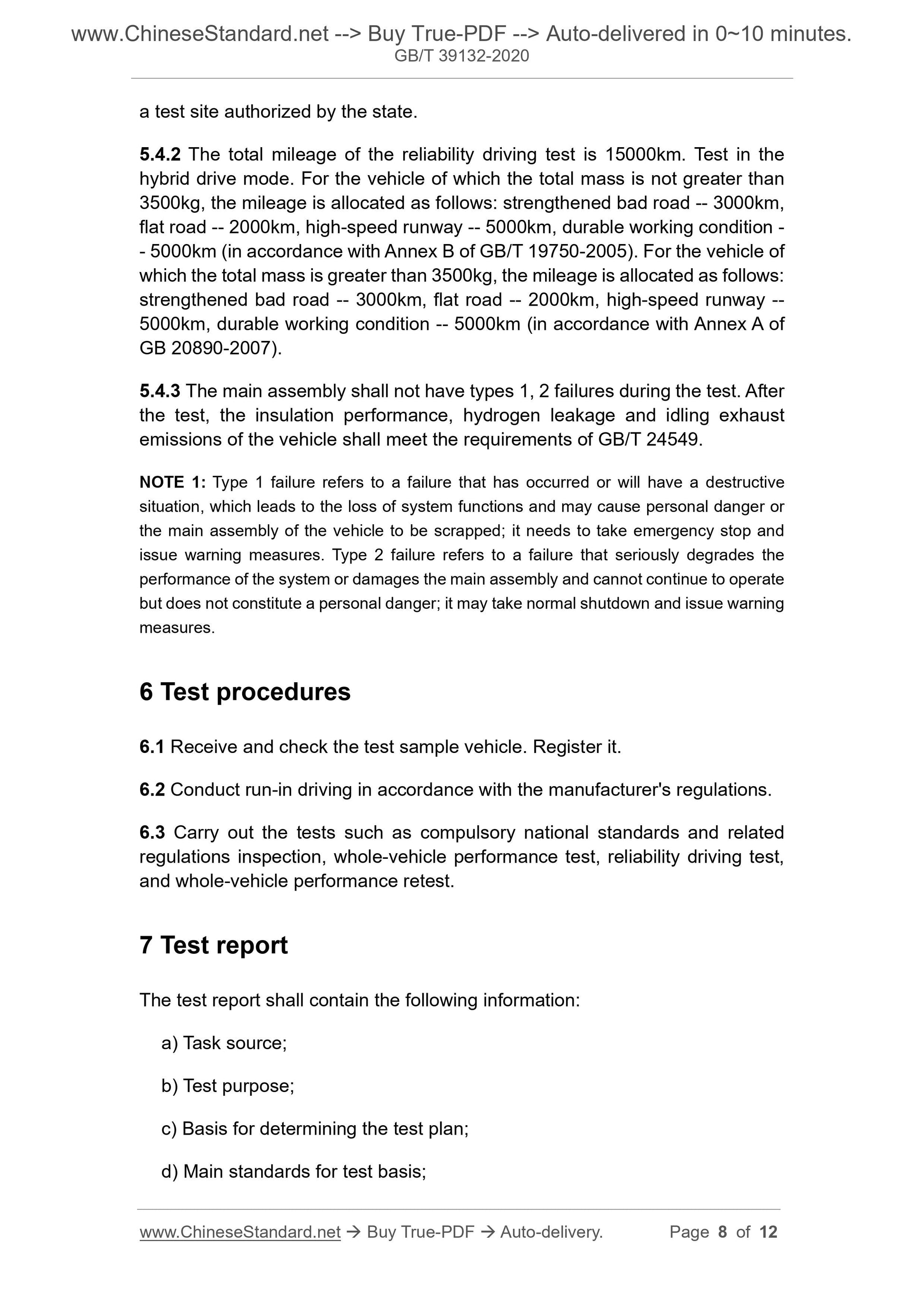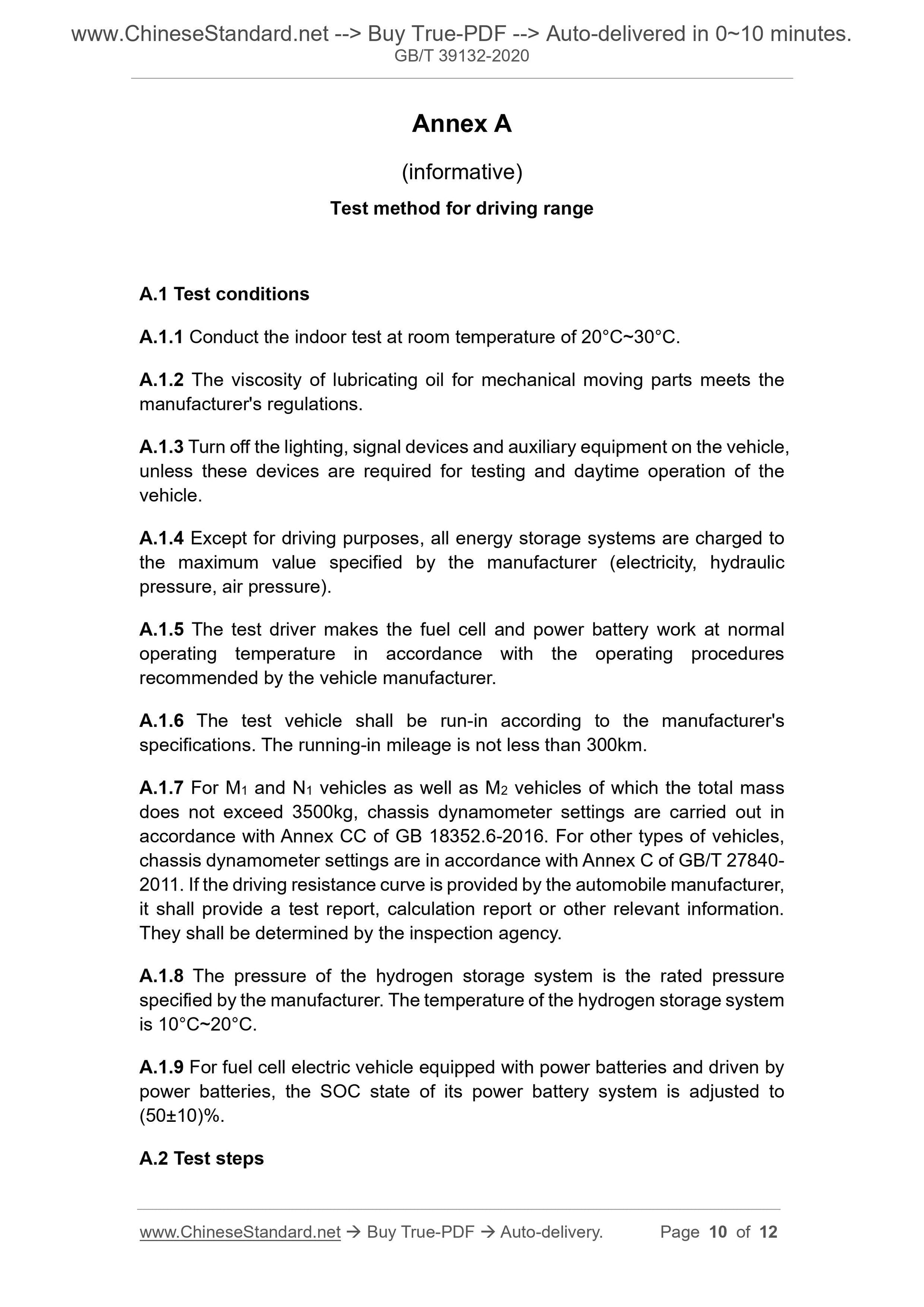1
/
of
6
www.ChineseStandard.us -- Field Test Asia Pte. Ltd.
GB/T 39132-2020 English PDF (GB/T39132-2020)
GB/T 39132-2020 English PDF (GB/T39132-2020)
Regular price
$155.00
Regular price
Sale price
$155.00
Unit price
/
per
Shipping calculated at checkout.
Couldn't load pickup availability
GB/T 39132-2020: Fuel cell electric vehicle engineering approval evaluation program
Delivery: 9 seconds. Download (and Email) true-PDF + Invoice.Get Quotation: Click GB/T 39132-2020 (Self-service in 1-minute)
Newer / historical versions: GB/T 39132-2020
Preview True-PDF
Scope
This Standard specifies implementation conditions, test items, test methods,judgment basis, test procedures and test report content for new product
engineering approval evaluation program of fuel cell electric vehicle.
This Standard is applicable to fuel cell electric vehicle that uses compressed
gaseous hydrogen.
Basic Data
| Standard ID | GB/T 39132-2020 (GB/T39132-2020) |
| Description (Translated English) | Fuel cell electric vehicle engineering approval evaluation program |
| Sector / Industry | National Standard (Recommended) |
| Classification of Chinese Standard | T47 |
| Classification of International Standard | 43.080.01 |
| Word Count Estimation | 10,152 |
| Date of Issue | 2020-10-11 |
| Date of Implementation | 2021-05-01 |
| Regulation (derived from) | National Standard Announcement No. 21 of 2020 |
| Issuing agency(ies) | State Administration for Market Regulation, China National Standardization Administration |
Share
